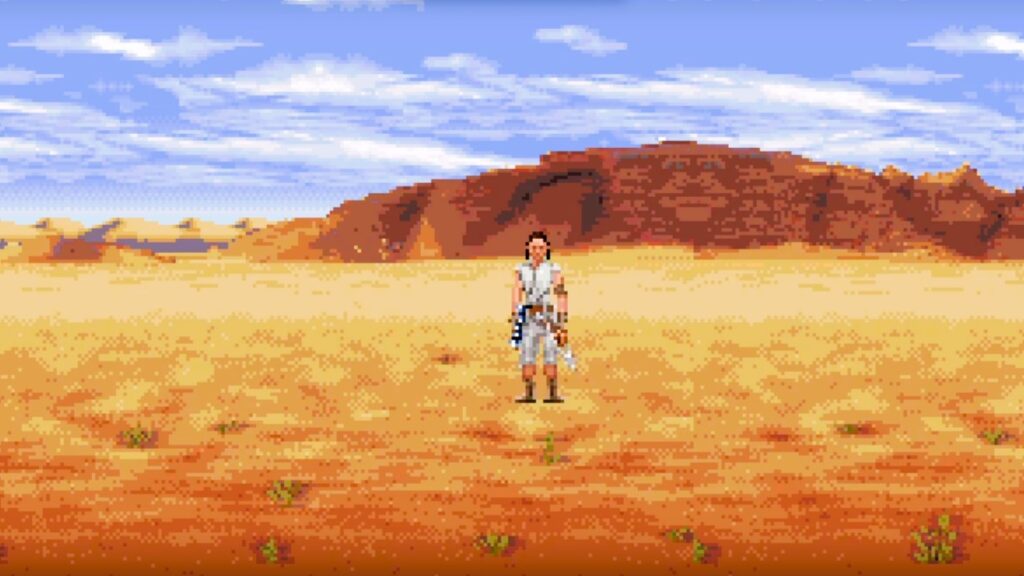The Evolution of Gaming Graphics: From 8-Bit to Ray Tracing

Gaming has come a long way since its inception, transforming from simple pixelated visuals into stunningly realistic graphics that immerse players in intricate worlds. This evolution has been driven by technological advancements, artistic innovation, and an ever-growing demand for richer gaming experiences. In this article, we will explore the journey of gaming graphics, tracing the evolution from 8-bit graphics to the cutting-edge ray tracing technology that defines modern gaming.
The Dawn of Gaming: 8-Bit Graphics
The 1980s marked the beginning of video gaming as we know it today. Early consoles like the Nintendo Entertainment System (NES) and the Sega Master System utilized 8-bit graphics, characterized by limited color palettes and simple pixel art. These graphics were primarily composed of square pixels, often resulting in blocky and simplistic images.
1. Iconic Titles and Art Styles
Despite the limitations of 8-bit graphics, game developers managed to create iconic titles that have stood the test of time. Games like Super Mario Bros. and The Legend of Zelda showcased creative sprite designs and imaginative worlds, capturing the hearts of gamers worldwide. The pixel art style of this era became a defining characteristic of retro gaming and continues to inspire modern indie developers.
The Rise of 16-Bit Graphics

As technology advanced, the introduction of 16-bit consoles, such as the Super Nintendo Entertainment System (SNES) and the Sega Genesis, brought about a significant leap in graphical fidelity. With a wider color palette and improved resolution, 16-bit graphics allowed for more detailed sprites and backgrounds.
2. Enhanced Audio and Visuals
The 16-bit era not only enhanced graphics but also improved audio quality, providing a richer gaming experience. Titles like Street Fighter II and Chrono Trigger pushed the boundaries of what was possible in terms of gameplay and presentation. Developers began experimenting with parallax scrolling, giving the illusion of depth and making game worlds feel more dynamic.
The Transition to 3D Graphics
The 1990s witnessed the emergence of 3D graphics, fundamentally changing how games were designed and played. The advent of 3D graphics accelerators and consoles like the Sony PlayStation and Nintendo 64 allowed developers to create immersive 3D environments.
3. Polygonal Graphics
With the shift to 3D, games transitioned from sprites to polygonal models, enabling more complex and realistic character designs. Titles such as Final Fantasy VII and Super Mario 64 showcased the potential of 3D graphics, allowing players to explore expansive worlds from various angles.
4. Texture Mapping and Lighting Effects
As hardware improved, developers began to incorporate texture mapping, allowing them to apply images onto 3D models, creating more detailed visuals. Games like Doom and Quake utilized texture mapping to create atmospheric environments, marking a significant step in the evolution of gaming graphics.
The Dawn of High Definition: 720p to 4K
The 2000s brought forth high-definition gaming, with the introduction of consoles like the Xbox 360 and PlayStation 3. These systems supported resolutions up to 1080p, dramatically improving visual clarity and detail.
5. Realistic Graphics and Physics Engines
Developers began to focus on realism, utilizing advanced physics engines to simulate real-world interactions within games. Titles like Half-Life 2 and Gears of War showcased not only stunning visuals but also intricate gameplay mechanics driven by physics, enhancing immersion.
6. The Impact of PC Gaming
PC gaming also experienced significant advancements during this period, with powerful graphics cards allowing for even higher resolutions and better graphical fidelity. The introduction of DirectX 11 and later versions enabled developers to create visually stunning experiences with features like tessellation and advanced shader effects.
The Age of Ray Tracing

As technology continued to evolve, the gaming industry began to embrace ray tracing, a rendering technique that simulates the way light interacts with objects in the real world. This technology produces incredibly realistic lighting, shadows, and reflections, revolutionizing the visual quality of games.
7. What is Ray Tracing?
Ray tracing works by simulating the behavior of light rays as they travel through a scene. Unlike traditional rasterization, which approximates light and shading, ray tracing traces the path of individual rays, calculating how they interact with surfaces. This results in more accurate reflections, refractions, and ambient occlusion, creating visually stunning environments.
8. The Advent of Real-Time Ray Tracing
With the release of NVIDIA’s RTX series graphics cards and the Microsoft DirectX Raytracing (DXR) API, real-time ray tracing became a reality for gamers. Titles like Cyberpunk 2077 and Control showcased the potential of ray tracing, offering breathtaking visuals that push the boundaries of what is possible in gaming. Did you like the article? Read also about Mobile Gaming.
9. Future of Gaming Graphics
As ray tracing technology continues to develop, we can expect even more remarkable advancements in gaming graphics. With the integration of artificial intelligence (AI) to enhance rendering processes and reduce computational demands, the future of gaming graphics looks promising. We may soon witness real-time photorealistic environments that blur the line between gaming and reality.
The evolution of gaming graphics from 8-bit to ray tracing is a testament to the creativity and innovation of the gaming industry. As technology continues to advance, the visual fidelity of games will only improve, providing players with richer and more immersive experiences. From the charming pixel art of the past to the stunning realism of modern ray tracing, the journey of gaming graphics has been nothing short of remarkable.
To learn more about the standards and developments in graphics technology, you can visit Wikipedia.



